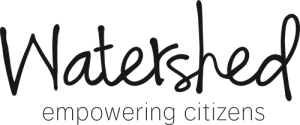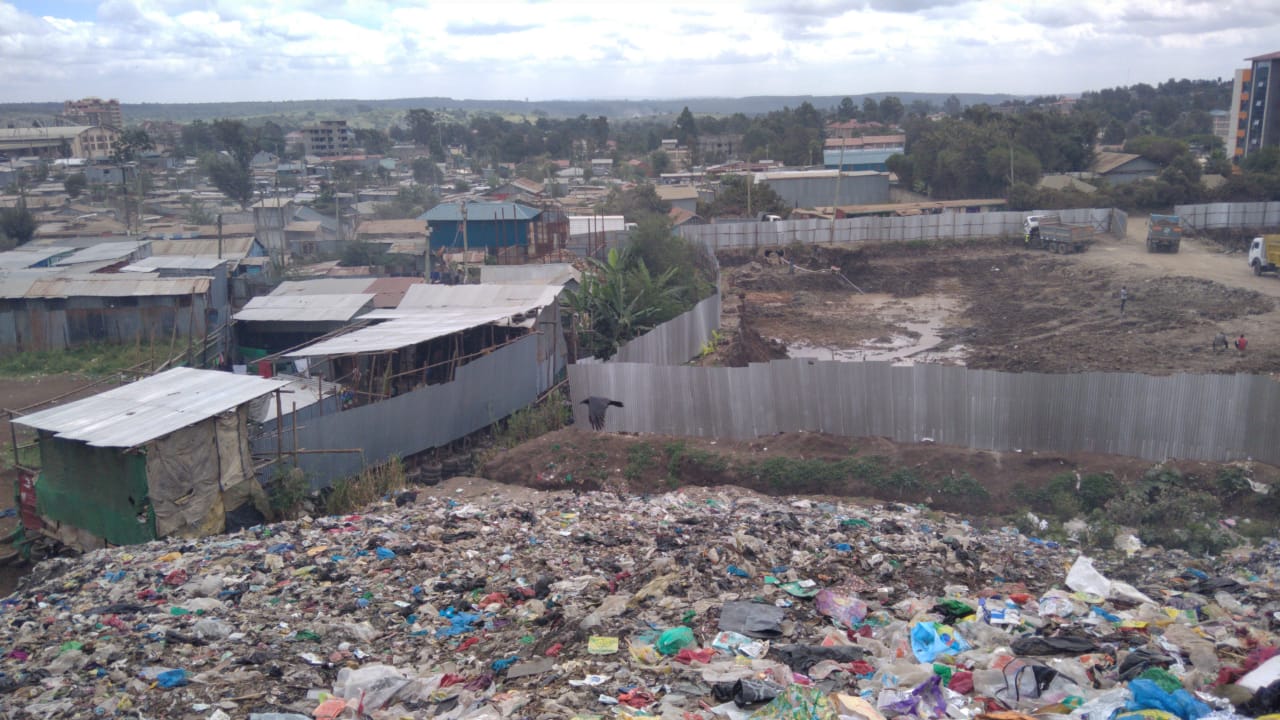How virtual field visits allow sneak peeks over the shoulders of colleagues.
Ever been on a landfill, surrounded by dirty diapers or seen the smelly shitty sludge dumped into a river? No? Well, now is your chance…. Working with the partners of Watershed, we have developed the concept of “Virtual Field Visits”, which showcase challenges and achievements from field locations and allow colleagues and the wider world to comment, ask questions and enjoy the live video footage.
Every Thursday, at 12:00 CET, we broadcast examples of linkages between WASH (Water, Sanitation and Hygiene) and IWRM (Integrated Water Resource Management) from areas that are safe to reach during lockdown. Last week, we went to a landfill in Kenya, this week Thursday 16th of July, a visit to a sludge dumping site in Mali is scheduled and on 23rd of July a visit to Bangladesh will take place to look at erosion and flooding. Like us on Facebook to stay updated and contact us if you would like us to visit one of your locations.
Furthermore, we have been able to “return the favour” by organising similar field visits in the Netherlands, taking colleagues from Bangladesh and Kenya on a virtual tour to see what is being done around water resource management in the dunes of Amsterdam.
Virtual, visual, informative and interactive videoing from smelly places – Watershed Dialogues
COVID-19 has brought many changes to all of us and lockdown and limited global travel have greatly impacted the way we look at the world, organise businesses and approach development. Fortunately, every disadvantage has its advantage (Johan Cruyff) and it has galvanised ways of working that people could only dream of before.
For years, I have wanted to “look over the shoulder” of a colleague who is visiting interesting places. With ever expanding internet and better phones all around, the concept may be simple, yet making it actually work has been a matter of trial and error. However, we are now feeling we are getting there and if you feel inspired and want to do something similar, here are some lessons learnt on the visits we organised:
- Find the right platform. To our own surprise, we realised that Facebook has a more natural video live engagement than others (Twitter, Instagram etc.), as comments can be replied on and there is interaction. Facebook is hugely popular also as a professional platform in countries like India, Bangladesh, Kenya and Uganda.
- Find the right IT structure. Although at IRC, we do everything with Microsoft Teams, for this we decided to use Zoom, which has a “broadcast to Facebook” function. This allows us to have multiple people online, share videos, or multiple locations that we can flip between (using “spotlight” function). Facebook’s own “live” function only supports maximum two speakers/videos, which is very limiting.
- Ensure that the person on location has good internet connection – preferably test before to make sure. We were slightly embarrassed to discover that in the Amsterdam dunes there is poor connectivity whereas Bhola district in South Bangladesh has an excellent and stable internet connection.
- Script the session and prepare a walk that can take the viewer from one interesting location to the next – for example from a landfill to a nearby borehole.
- We have chosen to go for an informal approach and discussion by a panel that take questions from Facebook comments which can be understood by a wider public (avoiding acronyms).
- There is guidance on privacy and dignity while broadcasting from public places. Ensure that GDPR is followed and if possible, inform people that filming will take place. We have decided, for example, not to include interviews as requesting authorisation during live broadcasting is impractical.
- Safety first for people on location – ensure masks are used appropriately, social distance is maintained, and authorisation has been requested if any property is accessed.
- Practical tips for the people on location – from slow, stable camera movements, through to using landscape video, headphones etc.
- Diversify and be creative– shifting between “studio”, to different field locations, screen sharing maps and publications allows for a more dynamic viewer experience.
| Webinar | Virtual field visit | |
| Audience | Global | Global |
| Duration | Typically one hour | Flexible but typically <30 minutes |
| Style | Typical “presenter style” | Dialogue |
| Access | Formal (invite/registration) | Informal (Facebook) |
| Dynamism | Relatively static – typical power point based | Dynamic switch between live video’s; google maps, presenters, documents etc. |
| Speakers | Typically senior staff | Mix |
| Comments | Typically closed after recording | Remains open |
An additional benefit is that because the style is more conversational, we have noticed that it is more inclusive – the people on location are usually younger, local and would not normally be invited to speak at webinars. That said, the chosen set-up does not allow for an extensive wider public to speak.
Though the Virtual Field Visits will never entirely replace the need for travel, it does provide a very useful, and intriguing alternative to the webinar format, a very cost effective and (carbon-neutral!) alternative to field visits and has potential to be developed much further in the future when virtual headsets and 360 cameras become as omnipresent as phones.
This blog has been written by Arjen Naafs of IRC

